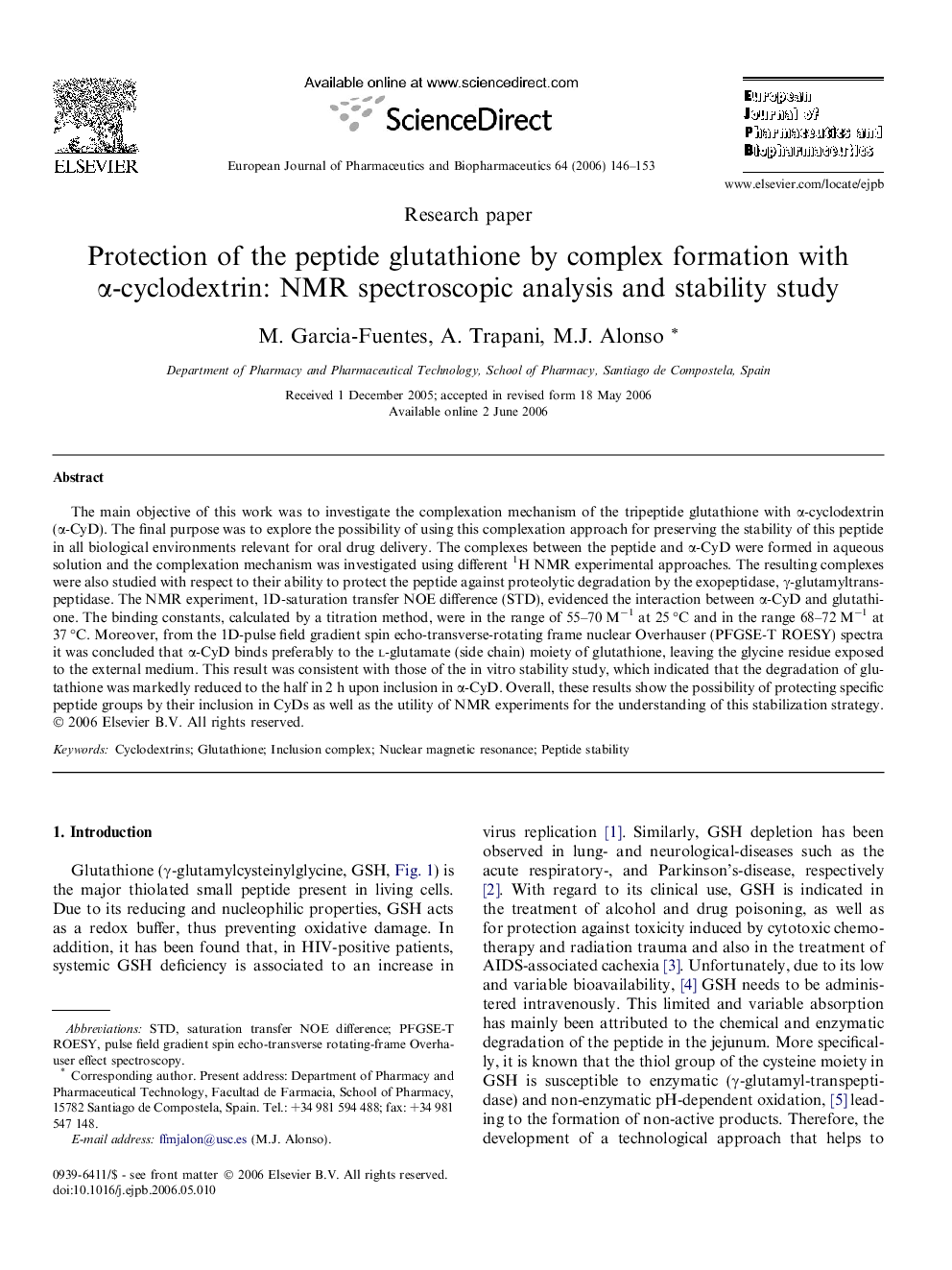| Article ID | Journal | Published Year | Pages | File Type |
|---|---|---|---|---|
| 2085750 | European Journal of Pharmaceutics and Biopharmaceutics | 2006 | 8 Pages |
Abstract
The main objective of this work was to investigate the complexation mechanism of the tripeptide glutathione with α-cyclodextrin (α-CyD). The final purpose was to explore the possibility of using this complexation approach for preserving the stability of this peptide in all biological environments relevant for oral drug delivery. The complexes between the peptide and α-CyD were formed in aqueous solution and the complexation mechanism was investigated using different 1H NMR experimental approaches. The resulting complexes were also studied with respect to their ability to protect the peptide against proteolytic degradation by the exopeptidase, γ-glutamyltranspeptidase. The NMR experiment, 1D-saturation transfer NOE difference (STD), evidenced the interaction between α-CyD and glutathione. The binding constants, calculated by a titration method, were in the range of 55-70 Mâ1 at 25 °C and in the range 68-72 Mâ1 at 37 °C. Moreover, from the 1D-pulse field gradient spin echo-transverse-rotating frame nuclear Overhauser (PFGSE-T ROESY) spectra it was concluded that α-CyD binds preferably to the l-glutamate (side chain) moiety of glutathione, leaving the glycine residue exposed to the external medium. This result was consistent with those of the in vitro stability study, which indicated that the degradation of glutathione was markedly reduced to the half in 2 h upon inclusion in α-CyD. Overall, these results show the possibility of protecting specific peptide groups by their inclusion in CyDs as well as the utility of NMR experiments for the understanding of this stabilization strategy.
Related Topics
Life Sciences
Biochemistry, Genetics and Molecular Biology
Biotechnology
Authors
M. Garcia-Fuentes, A. Trapani, M.J. Alonso,
